How to Choose a Ceiling Fan
1. Select a fan size for your space.
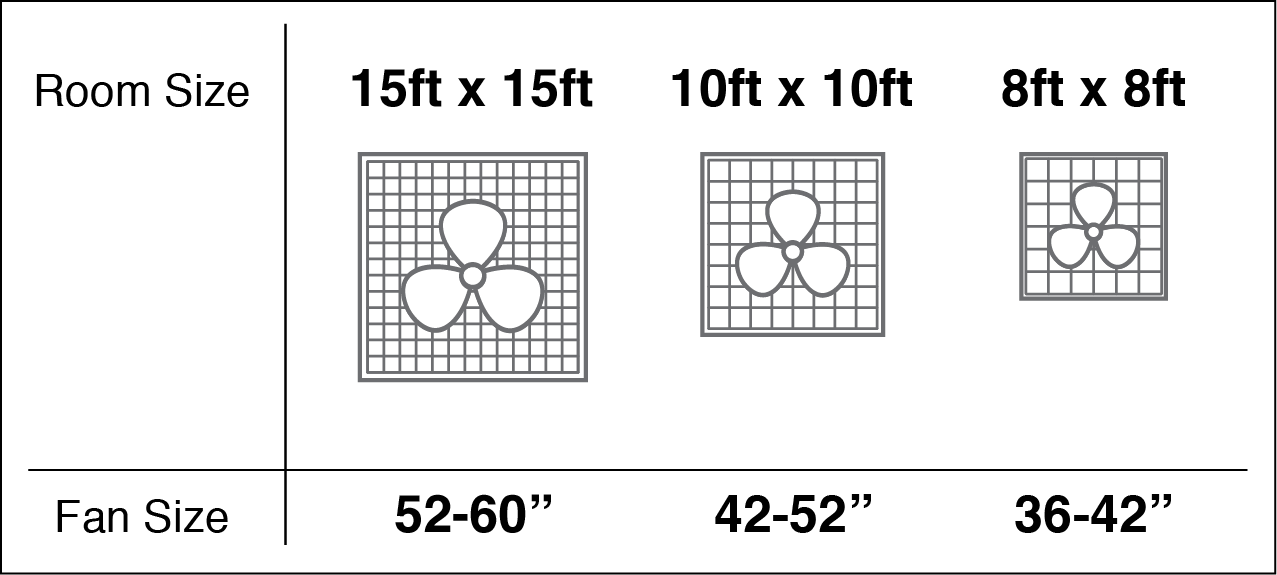
2. Choose whether to have a fan with or without a LED light kit.
|
Ideal for fan with light kit |
Ideal for fan without light kit |
3. Take note of the recommended downrod length based on ceiling height.
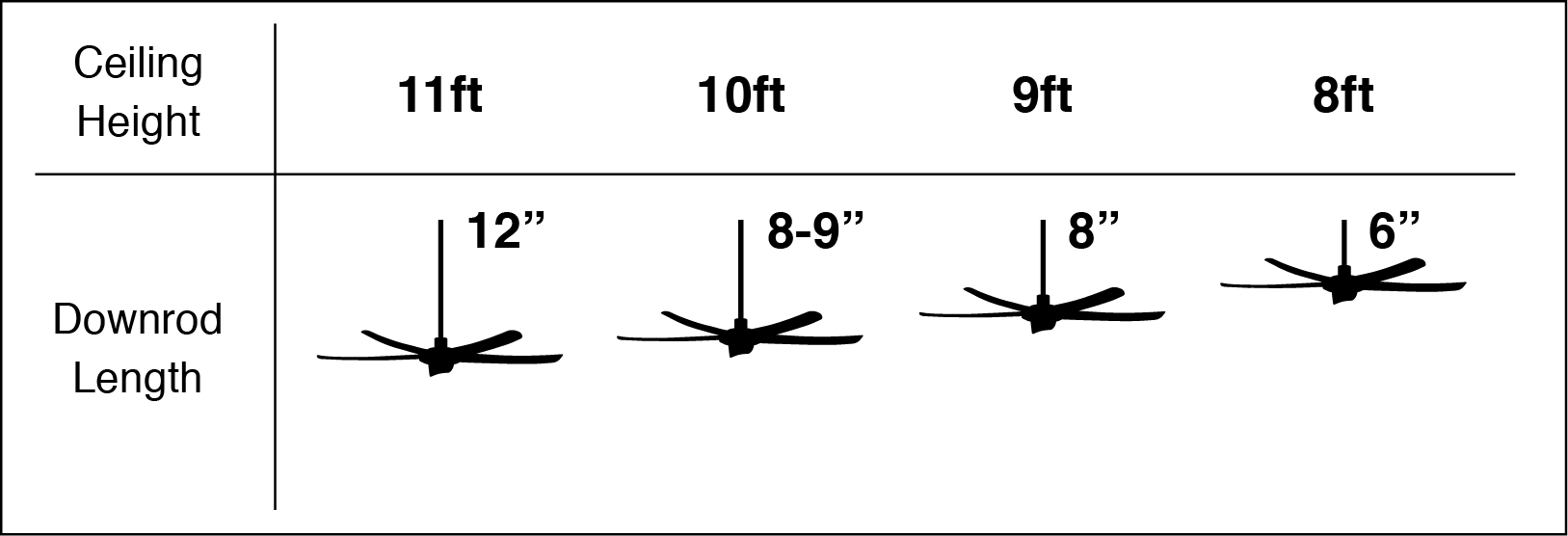
4. Choose the fan you need.
-
DC/ AC Motor
Fans with DC (direct current) motors are more energy-efficient compared to fans with AC (alternating current) motor, typically consuming 75% less power than a standard AC motor fan. -
Airflow (CFM)
CFM (Cubic Feet per Minute) refers to the measurement of how much air, in volume, is circulated by the ceiling fan per minute. Most Alpha fans typically have higher CFM ratings as our fan blades are pitched at strategic angles and our motors are custom engineered to generate maximum airflow with low energy consumption. You may refer to models with “Super Wind”. -
Fan Features
Choose from a diverse range of fan features Alpha provides, to choose a fan that suits your style and environment.Fan-Speed Options
Fan speed selection is often one of the biggest factors when purchasing a new fan. Alpha’s DC motor fans often have more speed selections, from a range of 6-Speed to 12-Speed Options.Forward/Reverse
The Forward/Reverse feature enables users to decide on the rotation of their fans to suit different climates and environments.
Forward: Fan rotates anti-clockwise to circulate cool air around and downwards; suitable for hot weather conditions.
Reverse: Rotates clockwise to draw air towards the ceiling, circulating warm air downwards; suitable for air-conditioned conditions.Natural Wind
This feature is specially engineered for the fan to switch between different fan speeds to simulate a gentle sea breeze in your home.Last Memory
This special feature remembers and restores your last used airflow settings the next time you turn on your ceiling fan.Timer On/Off
The timer feature lets you to set specific times to switch your fan on or off, either cooling your home in advance, or conserving energy when it’s cool enough for you.
5. Choose a design to embellish your interior.
When choosing a ceiling fan style for your interior, you may draw inspiration from your existing furnishings and finishes. Alpha offers ceiling fans in different styles and a wide range of colour options to cater to various interior design styles, as well as to achieve a cohesive look and feel for your space which we are sure you will love.
6. Select a fan with quality assurance.
- Singapore SAFETY Mark Certified:
All Alpha fans are proudly SAFETY Mark-certified, providing assured safety and product reliability to our users. All ceiling fans under the Alpha brand: Alkova, AlphaFan, and Vannus are SAFETY Mark certified and undergo an effective system of testing, supervision, and comply with relevant safety standards set by the Singapore government.
How to install the Ceiling Fan
Optimal installation conditions for achieving maximum air delivery and coverage.
- Fan blades must be at least 2.5 metre (8 feet) from the floor.
- Blade tips should be at least 1 metre (3 feet) from the wall.
- Fan blades should be at least 0.2 metre (0.7 foot) from the ceiling.
- When installing multiple ceiling fans in the same area, the center-to-center distance between the fans should be at least 2.5 times the width of the ceiling fan.
Installation of one unit Ceiling Fan
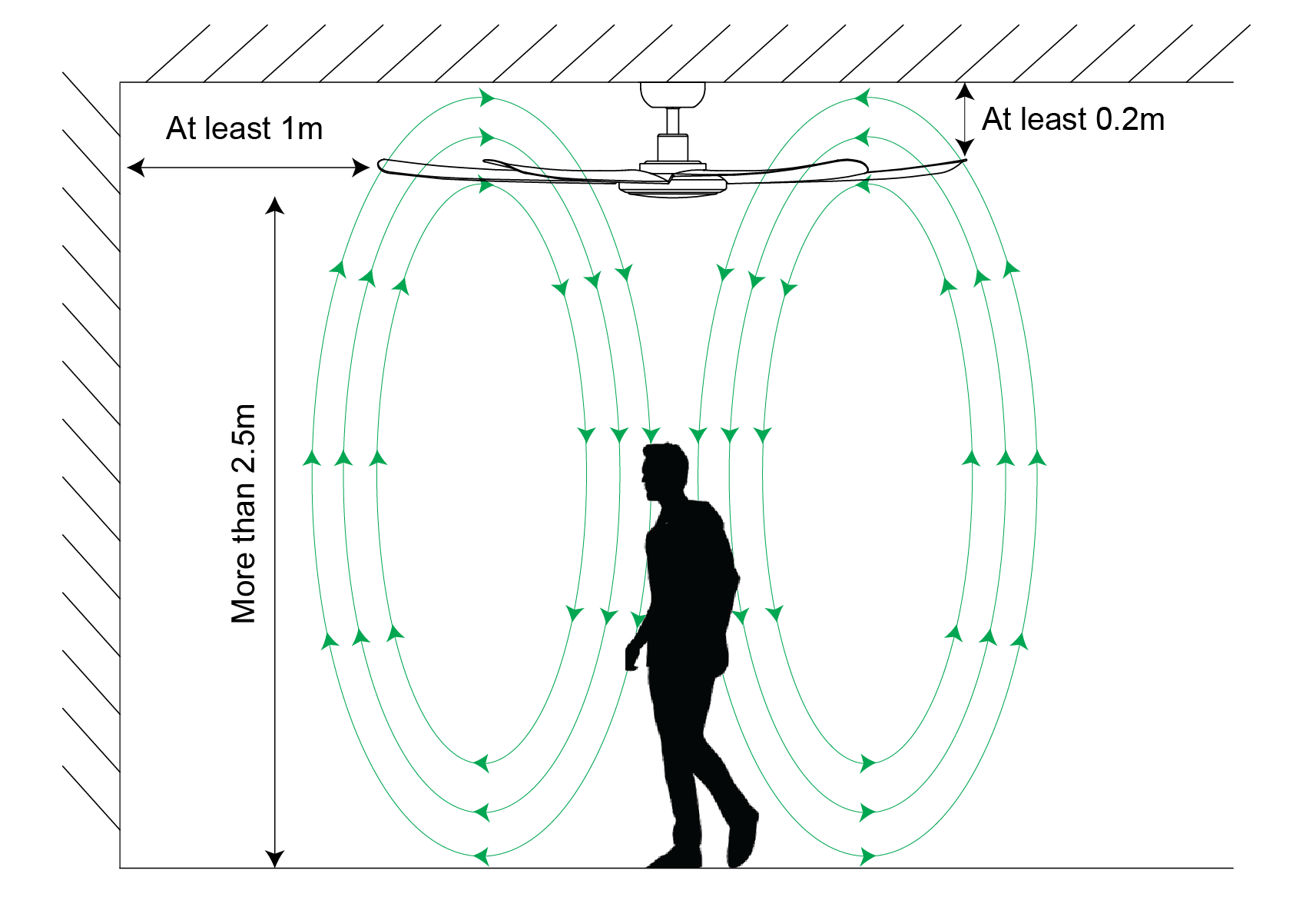
Installation of multiple Ceiling Fans
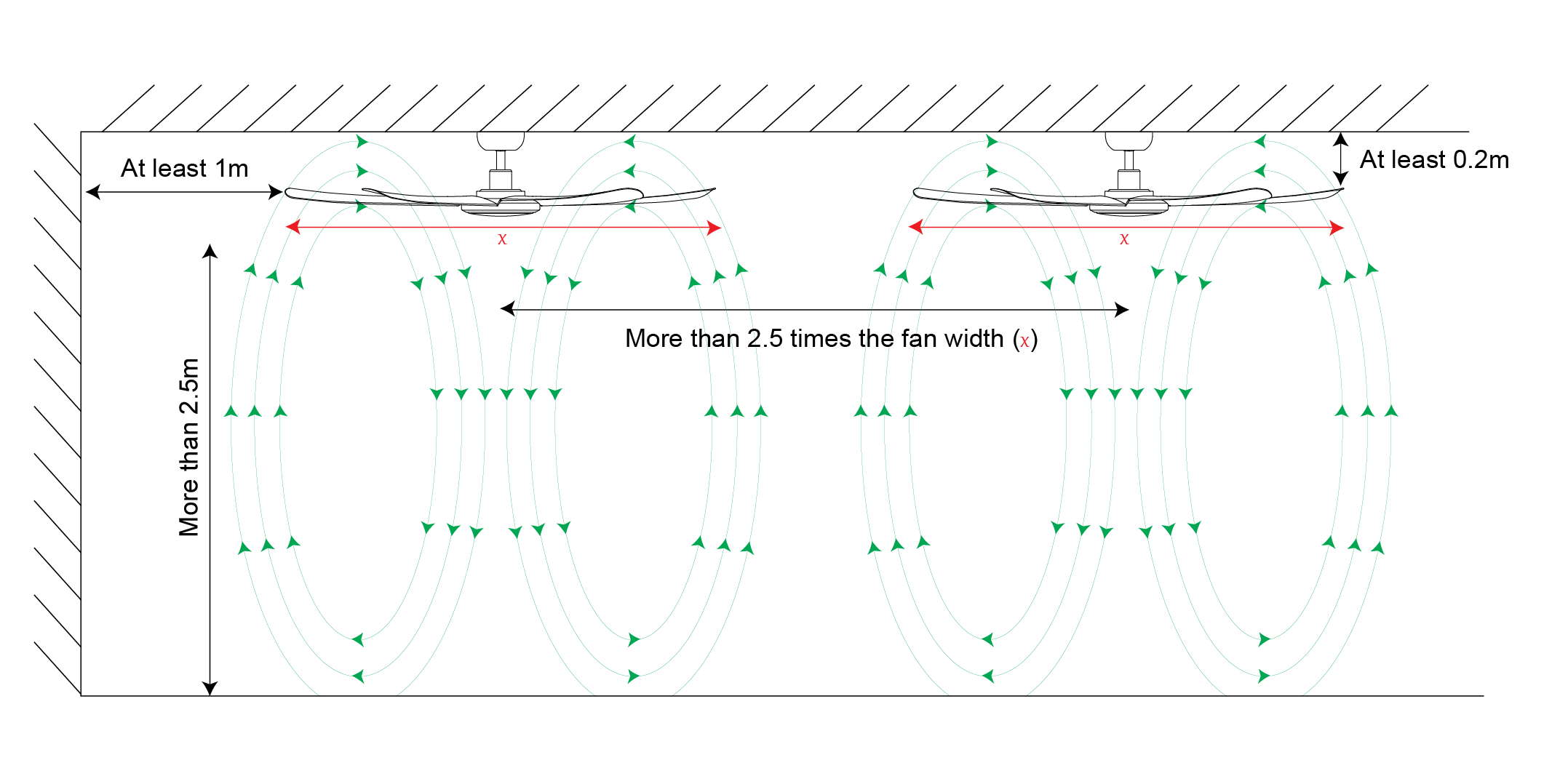
What happens if:
Condition 1: The distance between blade tips and the wall is less than 1 metre.
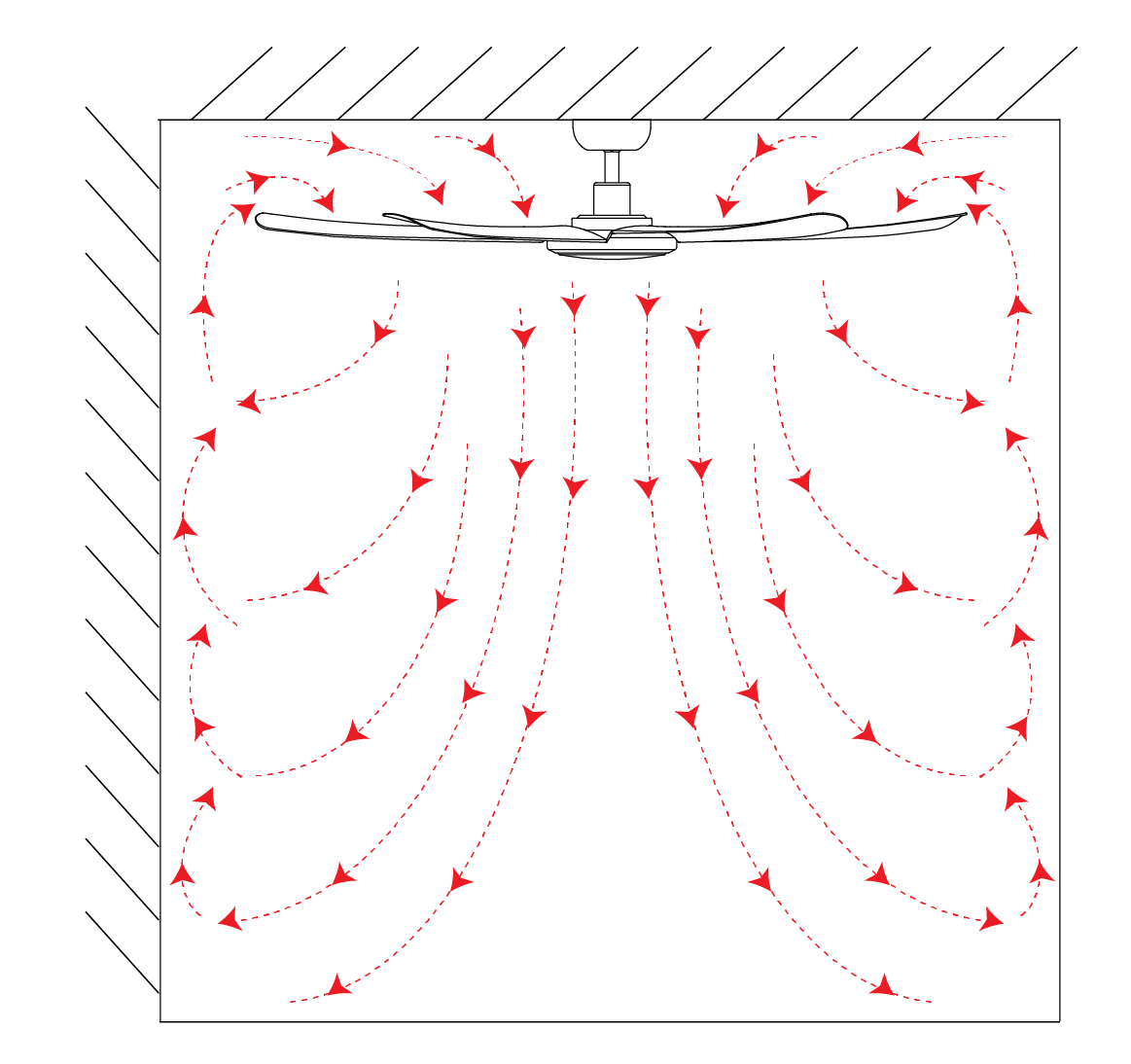
Cause: A large ceiling fan is installed in a small room, causing the fan blades to be too close to the wall (less than 1 metre). This can cause the fan to wobble and generate noise during operation due to unstable wind movement and air turbulence.
Recommendation: Install a smaller size ceiling fan so that the blade tips are at least 1 meter from the wall.
Condition 2: The distance between the fan blade and the ceiling is less than 0.2 metre.
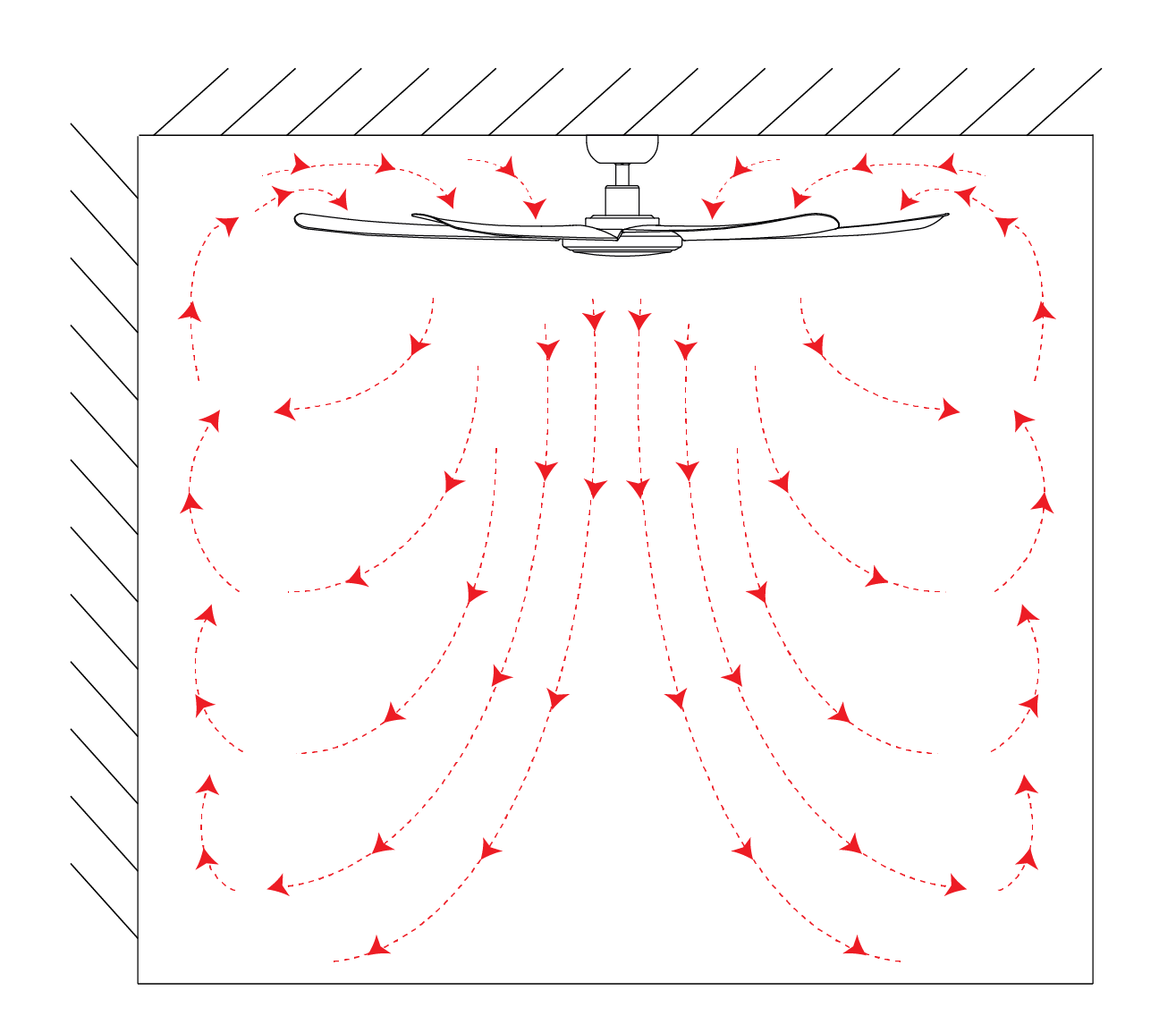
Cause: In this condition, the airflow may be poor, and noise may be generated during operation because air is circulated inefficiently.
Recommendation: Increase the fan downrod length so that the fan blades are at least 0.2 metre from the ceiling.

